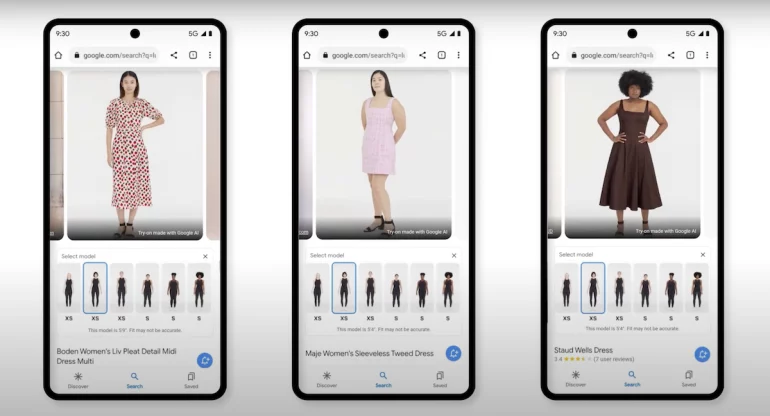- Google expanded its AI virtual try-on tool to support dresses from brands like Boden, Maje, Sandro, and others.
- The tool previously struggled with dresses due to their complexity, such as intricate prints and variable lengths.
- New technology, VTO-UNet Diffusion Transformer (VTO-UDiT), has been developed to improve the accuracy of virtual dress rendering.
- The tool preserves the dress’s details and the user’s body features.
- Google aims to differentiate itself from competitors like Adobe, Amazon, and Walmart by offering a more advanced, lifelike experience.
Main AI News:
Google has expanded its generative AI-powered virtual try-on tool to include dresses from popular brands like Boden, Maje, Sandro, Simkhai, and Staud. Dresses were among the most searched items, but Google’s previous diffusion technology struggled with their intricate nature, making it harder to deliver accurate virtual representations compared to simpler garments like tops and blouses.
Launched last year, the tool leverages diffusion technology to create realistic depictions of how clothes fit, capturing folds, wrinkles, and how fabric behaves on a moving body. However, the complexity of dresses, especially those with detailed prints and varying lengths, required a more advanced method to ensure both the dress and the wearer’s features were displayed.
In response, Google introduced a new training strategy that begins with low-resolution images and progressively adds more detail. It helps maintain essential details like floral or geometric prints without sacrificing quality. Additionally, Google has rolled out the VTO-UNet Diffusion Transformer (VTO-UDiT), which ensures body details are preserved while rendering the dress realistically.
With this upgrade, Google aims to stay ahead of competitors like Adobe, Amazon, and Walmart in the virtual try-on space. The introduction of advanced dress features marks a new chapter in the technology, providing customers with a more lifelike and precise experience when trying on clothes online.
Conclusion:
Google’s expansion of its virtual try-on tool to include dresses signifies a major step forward in the competitive virtual shopping market. By addressing the technical challenges of rendering more complex garments, Google sets itself apart from rivals and positions its tool as a leader in lifelike AI-powered retail experiences. This move will likely push other companies to invest further in their virtual try-on technologies, driving innovation and accelerating the adoption of AI in e-commerce. As online shopping becomes more personalized and interactive, businesses delivering realistic, user-friendly tools will gain a competitive edge in attracting and retaining customers.

